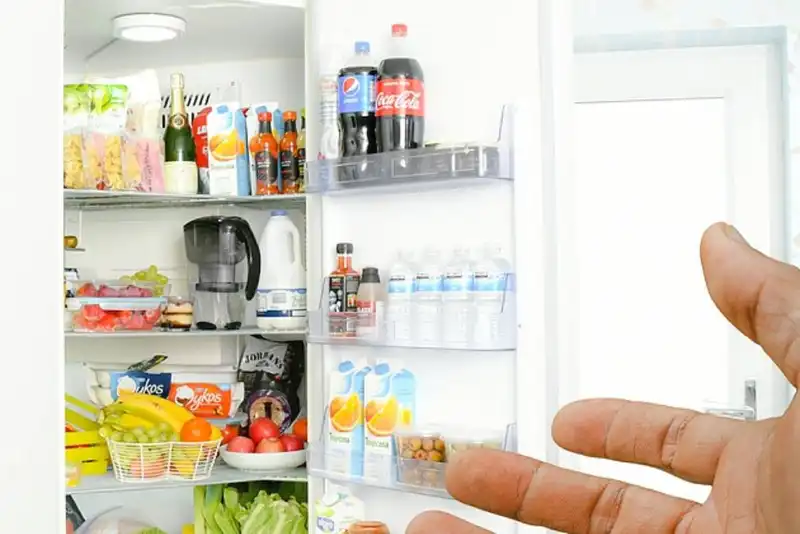What is restaurant inventory management ?
Restaurant inventory management is the process of keeping track of the food and supplies that a restaurant has on hand. It includes ordering new supplies when needed, keeping track of how much is being used, and making sure that there is enough to meet customer demand.
The Benefits of Automated Restaurant Inventory Management
What is Restaurant Inventory Management?

One of the foremost tasks restaurateurs must undertake in order to run a successful business is to put their house in order. This means they have to regularly and diligently take inventory counts. Without this all the effort and investment put in to create the best menus and advertisement campaigns, and hire the best talent would come to nothing.
No restaurant would be able to simplify and optimize its operations without a clear understanding of what products are being used, what quantity of those products are being used, what ingredients have depleted and must be repurchased, which menu items are high in demand, and which products get wasted owing to poor demand. Therefore, the inventory management procedures of a restaurant must be highly efficient.
Now, let's see what inventory management entails. It's the process of placing product orders, as well as maintaining, using, and selling products. It deals with storing, processing, and handling both raw materials and finished goods.
Inventory management is one of the components of supply chain management and is concerned with the flow of items from manufacturers and producers to storehouses and ultimately to retail outlets. It necessitates restaurants to maintain accurate food inventory counts as products enter or exit warehouses or are entered into the point of sale or POS systems.
There are a variety of inventory management systems to pick from, and choosing the appropriate one would make sure that the right items and their right quantities get delivered at the appropriate time.
What is Inventory Turnover and How Does it Impact a Business?
Restaurants using effective inventory management systems can keep track of trends and are able to guarantee that adequate food inventory levels can be maintained to satisfy customer demands and that shortages can be identified and addressed early.
The concept of inventory turnover, in this regard, can be used to test the efficacy of an inventory management system. Inventory turnover measures how often products are sold over a period of time.
An organization should have a fair idea of how much it will be able to sell and should order accordingly. Therefore, inventory and supply chain management systems should be integrated with demand/sales forecasting systems. Holding more stocks than can be sold may lead to the accumulation of dead stock or unsold inventory. This would point toward a low inventory turnover, which is not something that any company would want.
A concept related to inventory management, and an important yardstick to measure a company's bottom line is the cost of goods sold. It is the cost related directly to the production of goods. The cost of goods sold is calculated by subtracting the value of ending inventory from the sum of beginning inventory and purchases. Therefore, in case the cost of goods sold increases, the net income of the business would decrease. Also, gross profit can be measured by deducting the cost of goods sold from revenues.
You've been counting your inventory by hand, but the system is not without its problems.
Automated inventory management is the only way to count your stocks. This article tells you why.
What is Inventory Management Software?

Inventory management software is a type of computer program that makes the maintenance and management of stocks an automated process. It enables business owners to monitor current inventory levels and to quickly identify which products need to be purchased in greater quantities.
Software solutions have made it extremely easy and quick for business owners to view stock levels and search for information on products simply by glancing at their mobile screens, and to manage stocks with just a few clicks on handheld devices.
Businesses may also use sales data from the past to predict which items will sell rapidly or slowly. By foreseeing demand changes businesses would be able to place orders accordingly.
Stock-taking is a time-consuming and labor-intensive activity. As a result, businesses need management systems to make it simpler to record data.
The majority of inventory management platforms have pre-installed data entry templates. This reduces the amount of time it takes to calculate inventory. Templates for tracking inventory make sure that no ingredient goes unnoticed. Sophisticated software solutions can be easily connected with the restaurant management system the company already uses.
Inventory management software delivers perceptible advantages over counting of stocks done manually or with the help of simple spreadsheets.
The use of rudimentary methods for stock-taking will become more difficult as the company grows. Smart cloud-based software such as Zip Inventory, which can be accessed from the Hubworks app store, helps in automating inventory management and provides users with real time access to a wide range of business intelligence data.
This data can then be interpreted to generate actionable insights, on the basis of which decisions can be calibrated and plans chalked out. The extent to which technology smoothens the otherwise painstaking process of inventory management can be seen from Zip Inventory's voice search feature that lets users count inventory just by uttering the product name.
How Does Inventory Software Work?

Restaurant inventory management aims to maintain and monitor raw materials as well as processed commodities to properly plan purchases, analyze food costs, and reduce food waste. If a restaurant can afford it, a restaurant inventory management software solution can be integrated with a POS system, and supply chain management software to reap greater benefits. Furthermore, connecting inventory management solutions with business intelligence, data reporting, and data analytics solutions would allow a restaurant to take its business to a whole new level.
A restaurant inventory management solution works in the following manner- To start off, scanners read Radio Frequency Identification (RFID) tags or barcodes to identify products that customers purchase. The scanners decode the barcodes and send the product data to the software. The software then decodes the barcode digits and matches those digits with the kind of products they represent.
This ensures that business owners can monitor their sales and inventory levels by using handheld devices at the POS counter. When a customer purchases an item from the restaurant, or through online ordering, point of sale systems update inventory levels. Restaurant operators can then evaluate POS statistics to make business decisions.
A specialized restaurant management solution keeps track of how much inventory has been ordered, how much is in the warehouse, and how much is on the restaurant's shelves. It gives business owners a real time picture of what's going on in their restaurants. Sometimes software solutions are set up in such a way that they can automatically place product orders at specific moments.
When a decision is taken to reorder a product, the software informs the supplier electronically. This information gets saved in the computer's memory, and managers on both ends can access it. Therefore, an inventory tracking and management system that is automated and intelligent not only allows you to keep track of stock levels but also lets you avoid overstocking and underutilization.
5 Benefits of Inventory Software

1. Monitoring in real time-
Inventory management is important because it allows a restaurant business to prevent embarrassing scenarios like being unable to deliver a menu item in spite of it being in high demand, owing to a shortage of vital ingredients. This can be effectively handled with the help of technology that tracks inventory in real time.
Furthermore, cloud-based restaurant POS systems aid in the analysis of consumer behavior and identify the most popular and least popular menu items. This enables business owners to make more informed inventory decisions.
2. Reduced food waste and food costs-
A restaurant should look to restrict its food cost to 35% of its total revenue in order to be profitable. However, many US restaurants waste money on food that they don't use and end up discarding.
The amount of food thrown away in US restaurants is estimated to be around 30 billion pounds per year. The logistics required to stock and store unused and unsold food adds to restaurants' food costs. With a proper inventory and supply chain management system, however, this wastage of resources can be reduced.
Restaurants should avoid overbuying and conserve food supplies. With proper supply chain and inventory management, the gap between anticipated and actual food consumption can be minimized.
3. Improved supplier management-
Restaurant owners working with good inventory solutions will be on solid ground while negotiating with suppliers. A robust inventory management plan can let businesses strike a balance between demand and supply.
By keeping supplies at an optimal level, business owners can make sure that food waste can be controlled and that only fresh ingredients are used at all times.
It is vital for businesses to know exactly when to place orders for new items, and how much to order. Automated inventory management systems create purchase orders when stock levels reach a specified threshold.
4. Decisions driven by data-
Advanced inventory management software provides vital sales data and assists organizations in better understanding the workings of demand and supply. It enables restaurants to make stronger strategic decisions by letting them forecast sales patterns more accurately. Inventory management software helps in identifying the possibilities for lowering inventory levels and carrying costs by discovering the inventory turnover ratio.
Moreover, inventory and Supply Chain management systems can be adjusted, for example, in view of a big event pushing up sales or harsh weather driving down demand.
5. Recipe standardization-
Food quality and flavor consistency can be maintained by thoroughly documenting recipes. Recipe standardization ensures that there is minimal food wastage with the proportion of items necessary for each dish being well-documented. Standardized recipes help in inventory control and recipe costing in restaurants.
If, however, costs are inconsistent, the restaurant would not be able to accurately measure par levels, inventory shrinkage, or inventory fluctuation.
Inventory management is the fulcrum of any successful business.
This article tells you how to select the right inventory software for your business.
What to Look for in Inventory Management Software

If you're not sure which inventory management software is best for your establishment, ask yourself the following questions before deciding-
1. What is the size of your business?
Larger businesses have more complex inventories and require inventory management tools that are more sophisticated.
2. What exactly do you seek to achieve?
Make a list of the operational challenges you are encountering and the inventory management objectives you want to achieve. This could include everything, from lowering inventory holding costs and speeding up operations, to making scalability easier, and boosting profits.
3. What features of the inventory management system are absolutely necessary?
The type of products a business sells will decide the features and tools it would need. Certain inventory management solutions allow batch tracking. The company should make sure that the system it chooses has the functionality required to meet its specific requirements.
4. What's the highest amount that you are open to paying?
Vital functionalities may be available at greatly varying prices. Paying for these features would, however, expand the bottom line of your company in the long run, while reducing your costs as well.
5. What is the nature of your sales channels?
If you sell through multiple channels, you would require a system that can manage all of them. Sophisticated inventory management systems can, in this regard, integrate with numerous platforms like Amazon, Lazada, BigCommerce, and Shopify.
6. What types of integrations do you require?
A number of cloud-based inventory management systems allow integration with other software solutions like accounting systems, logistics systems, and so on. It is also possible to achieve custom integrations with certain service providers through an Application Programming Interface (API).
7. Who needs to access the software?
A cloud-based inventory system that updates automatically and in real time for everyone to view data anytime and from anywhere is what a business should choose, particualry if their set-up is such that numerous teams are required to use the software on a regular basis.
Top 3 Inventory Software Solutions for Restaurants
1. Zip Inventory-
This software solution helps a business manage inventory in the most meticulous manner. The voice search feature offered by Zip Inventory has already been mentioned. Apart from that, this software lets users select the count frequency for each item. Inventory reports are available at all times, and the software offers a clear view of the products sold and their pricing. It also shows the estimated total food cost and the profit earned by each menu item.
Zip Inventory assists users in finding the most popular menu items and ensures the restaurant is always well-stocked to serve its patrons. Business owners are notified quickly if an inventory count is incorrect. This software is very easy to operate.
The subscription tiers offered by Zip Inventory are Standard and Professional. The Standard subscription is priced at $125 per location per month, whereas the Professional subscription costs $175 per location per month. Users at both tiers get free assistance.
2. Upserve-
This software solution for restaurant management has a sophisticated POS platform as well as robust inventory management features. It has iOS and Android mobile apps that let business owners manage their establishments from anywhere.
This software is compatible with a variety of hardware components and also supports an offline mode. Recipes may be synced with the point of sale system, and inventory levels can be automatically replenished as new stocks arrive.
Upserve enables restaurant owners to manage suppliers, purchase goods with a single click, scan stocks using the mobile app, get alerts when stocks run out, do real time tracking of ingredient levels, and compare expected and actual inventory usage data.
There are three tiers of membership, namely Core, Pro, and Pro Plus. Their prices are $59, $199, and $359, and the prices of the POS terminals are $60, $50, and $40 respectively.
3. Orca-
It's a browser-based inventory solution for restaurants. Orca monitors daily orders and sales, helping you to establish accurate budgets and sales projections.
Even the weather is taken into account by the software, letting businesses compare sales and costs on rainy and sunny days.
Orca can suggest orders based on past sales information or sales forecasts. With merely a click, actual sales can be compared with inventory use per menu item.
The waste tracking report shows where cooks and bartenders may have deviated from the recipe, as well as where a business may have lost alcohol bottles due to breakage or theft. Point of sale and vendor integrations are priced at $199 apiece. The software subscription costs $129 a month.
Final Word

By now it's amply clear that inventory management is a crucial part of restaurant management.
When stocks start to run low and products need to be reordered, smart software systems send notifications to restaurant business owners. Operators who have managed their stocks well would immediately know how much inventory they have and how much they need to reorder to avoid over-purchasing, stock-outs, and food wastage.
Inventory management must, therefore, be linked with prudent demand planning in order to optimize stock levels and prevent inconsistencies between projected and actual supply utilization.
Inventory tracking is necessary to prevent the loss of stocks as a result of spoilage, pilferage, pest infestations, and supply fraud.
Proper Inventory Control ensures that you only maintain the product quantities that you require. This helps in utilizing space better and allows you to reduce expenses.
You need to follow inventory management best practices such as employing user-friendly software, establishing the right team for stock-taking, fixing a schedule for inventory management, organizing and labeling the inventory space, and so on.
You also need to reconcile your inventory from time to time to discover inventory problems, such as slow-moving, insufficient, obsolete, excess, or discontinued stocks.
Businesses can keep their inventory levels, cash flow, and bottom line in great shape with timely adjustments to their inventory management techniques.
You're looking for the right inventory software for your restaurant but you can't decide what to buy.
Your hunt ends here. This article lines up the best inventory software in the market.




